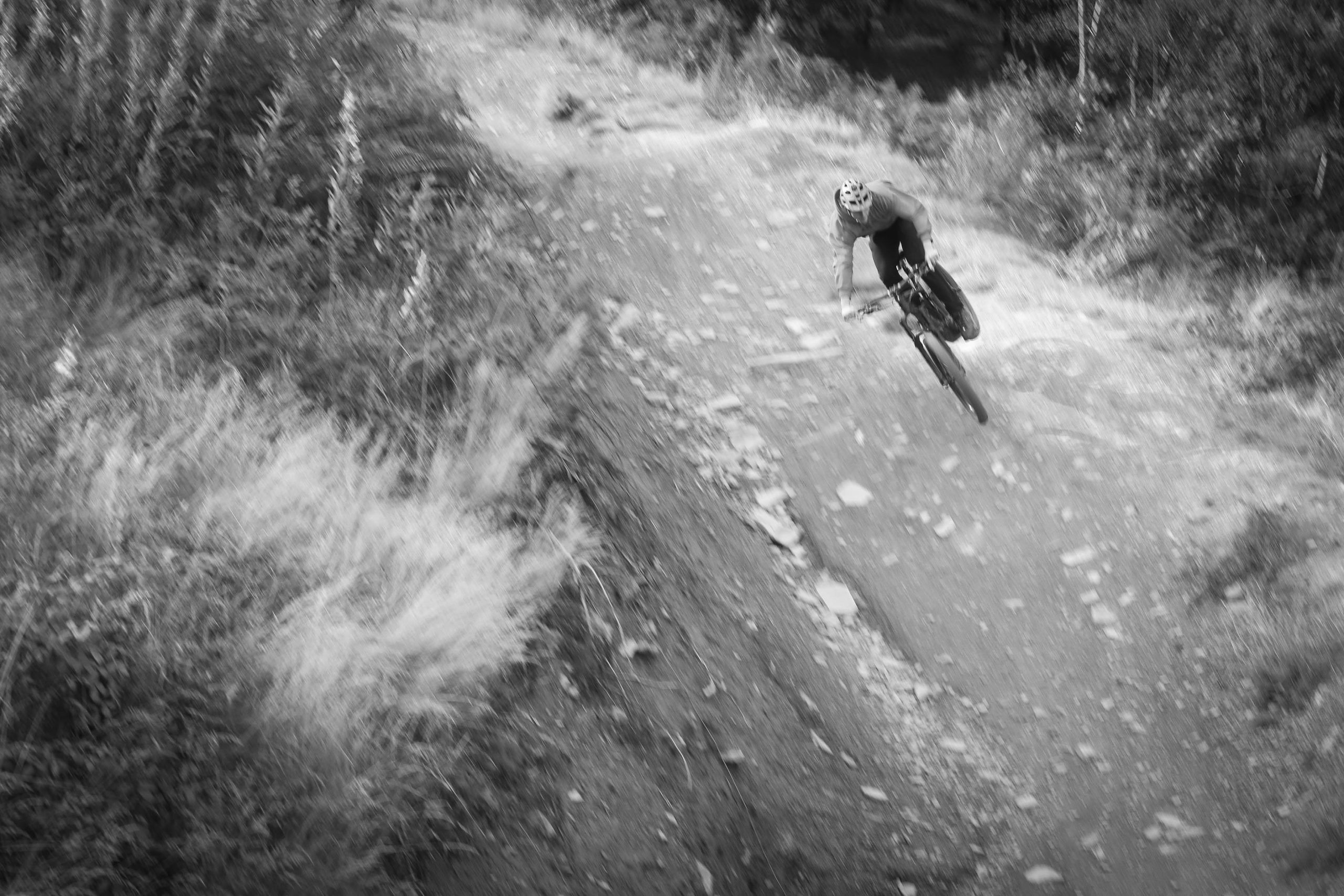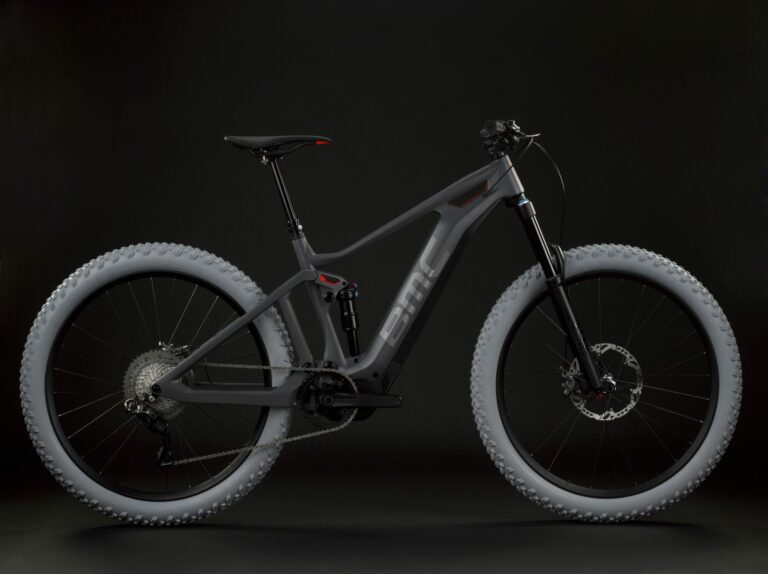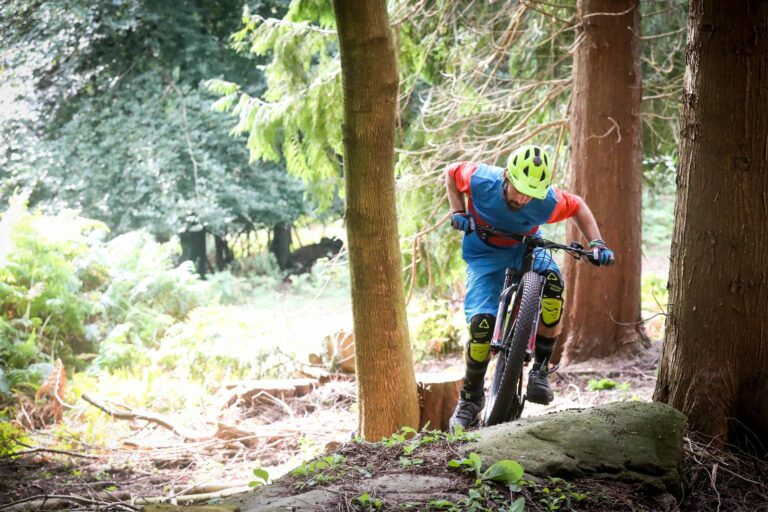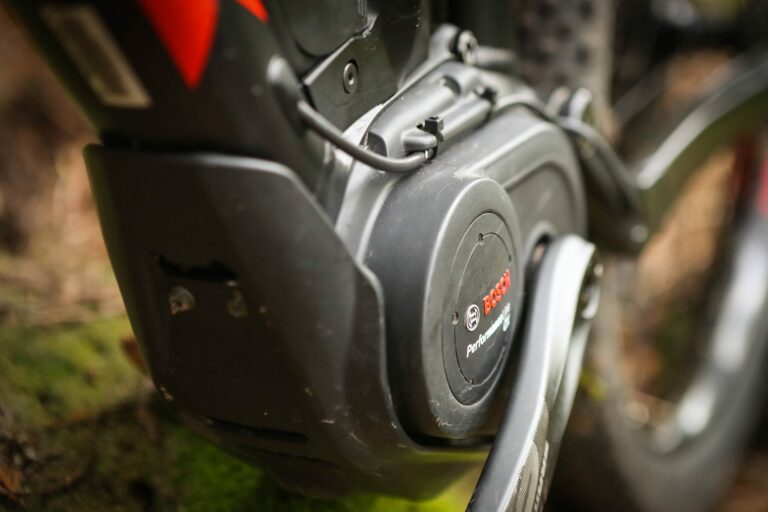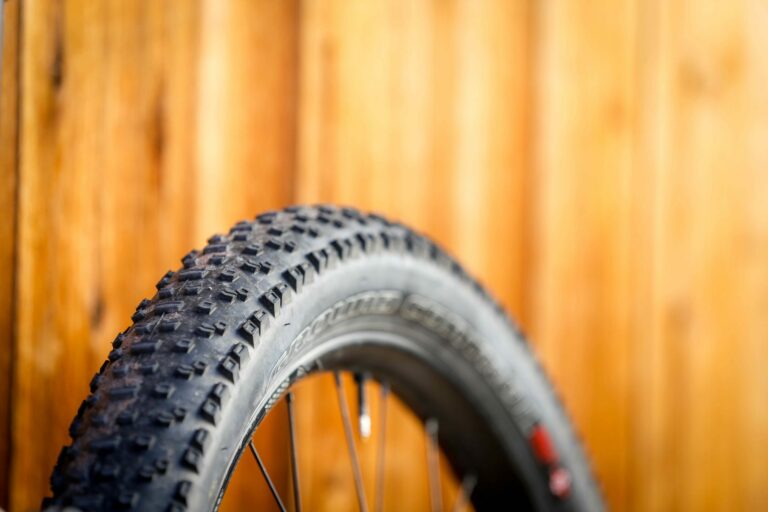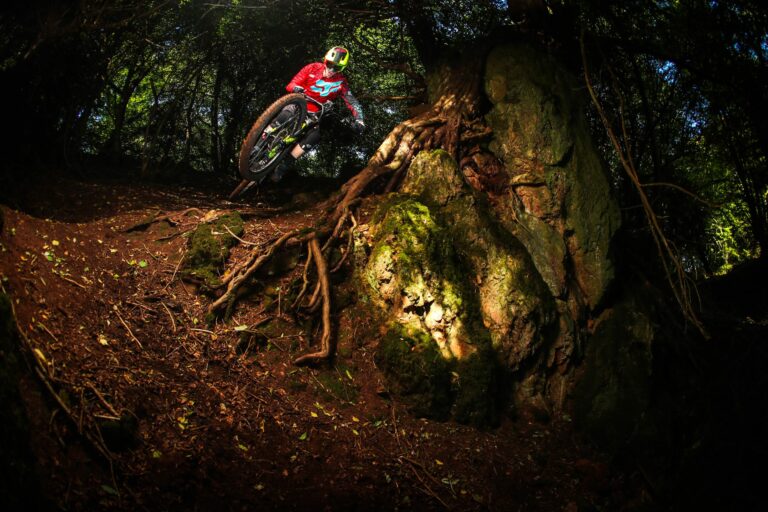Words and photos: Steve Jones
There are many variables affecting the performance of e-mtb on descents none more so than the steepness of track, the shape and the surface conditions.
Overall the e-mtb is quite similar to a standard bike but riding them requires a different approach.

The timed training results was a massive curve ball for us. To begin the testing we hit a downhill stage with the e-mtb in ‘power off’ mode simply to see how much slower they were. We took in two stages, both with the same start point but with different endings – one steep, one relatively shallow and pedally.
“remember the more you climb the more you can potentially descend and that’s where there can be even more of a work out”
The top sector to the minute mark comprised of medium speed, flat corners with lots of root, the terrain natural. The e-mtb even in ‘power off’ felt like it was carrying good momentum, the grip consistent and the exit speeds comparable, corner entry braking simply needed good management. Transferring to the mtb, the ride was more lively, although slightly more boney with more chassis feedback and bounce. Weight transfer was more noticeable.


